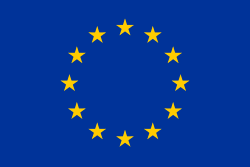Första asylland
Ett första asylland är ett land i vilket en asylsökande redan har erhållit asyl (eller motsvarande skydd) och tillåts resa in.[1][2]
Enligt asylprocedurdirektivet inom Europeiska unionen kan en medlemsstat neka att pröva en asylansökan om ett land utanför unionen kan betraktas som första asylland.[3] I så fall ska den asylsökande utvisas till landet i fråga. Syftet bakom direktivets bestämmelse är att en medlemsstat inte ska behöva ge skydd åt en person som redan har fått fullgott skydd i ett annat land.
Principen om första asylland ligger även till grund för Dublinförordningen, som föreskriver att den medlemsstat där en asylsökande först har inlämnat en asylansökan eller på annat sätt har registrerats ska pröva ansökan.[4] Asylsökandes fingeravtryck lagras i databasen Eurodac i syfte att enklare kunna fastställa vilken medlemsstat som är ansvarig för att pröva en asylansökan inom unionen.
Se även
Referenser
- ^ ”First country of asylum” (på engelska). Europeiska kommissionen. https://ec.europa.eu/home-affairs/pages/glossary/first-country-asylum_en. Läst 17 januari 2022.
- ^ ”Artikel 35 i Europaparlamentets och rådets direktiv 2013/32/EU av den 26 juni 2013 om gemensamma förfaranden för att bevilja och återkalla internationellt skydd”. EUT L 180, 29.6.2013, s. 79–80. EUR-Lex. https://eur-lex.europa.eu/legal-content/SV/TXT/PDF/?uri=CELEX:32013L0032.
- ^ ”Artikel 33 i Europaparlamentets och rådets direktiv 2013/32/EU av den 26 juni 2013 om gemensamma förfaranden för att bevilja och återkalla internationellt skydd”. EUT L 180, 29.6.2013, s. 79. EUR-Lex. https://eur-lex.europa.eu/legal-content/SV/TXT/PDF/?uri=CELEX:32013L0032.
- ^ ”Kapitel III i Europaparlamentets och rådets förordning (EU) nr 604/2013 av den 26 juni 2013 om kriterier och mekanismer för att avgöra vilken medlemsstat som är ansvarig för att pröva en ansökan om internationellt skydd som en tredjelandsmedborgare eller en statslös person har lämnat in i någon medlemsstat”. EUT L 180, 29.6.2013, s. 39–41. EUR-Lex. https://eur-lex.europa.eu/legal-content/SV/TXT/PDF/?uri=CELEX:32013R0604.
| EU-portalen – temasidan för Europeiska unionen på svenskspråkiga Wikipedia. |
Media som används på denna webbplats
The Flag of Europe is the flag and emblem of the European Union (EU) and Council of Europe (CoE). It consists of a circle of 12 golden (yellow) stars on a blue background. It was created in 1955 by the CoE and adopted by the EU, then the European Communities, in the 1980s.
The CoE and EU are distinct in membership and nature. The CoE is a 47-member international organisation dealing with human rights and rule of law, while the EU is a quasi-federal union of 27 states focused on economic integration and political cooperation. Today, the flag is mostly associated with the latter.
It was the intention of the CoE that the flag should come to represent Europe as a whole, and since its adoption the membership of the CoE covers nearly the entire continent. This is why the EU adopted the same flag. The flag has been used to represent Europe in sporting events and as a pro-democracy banner outside the Union.